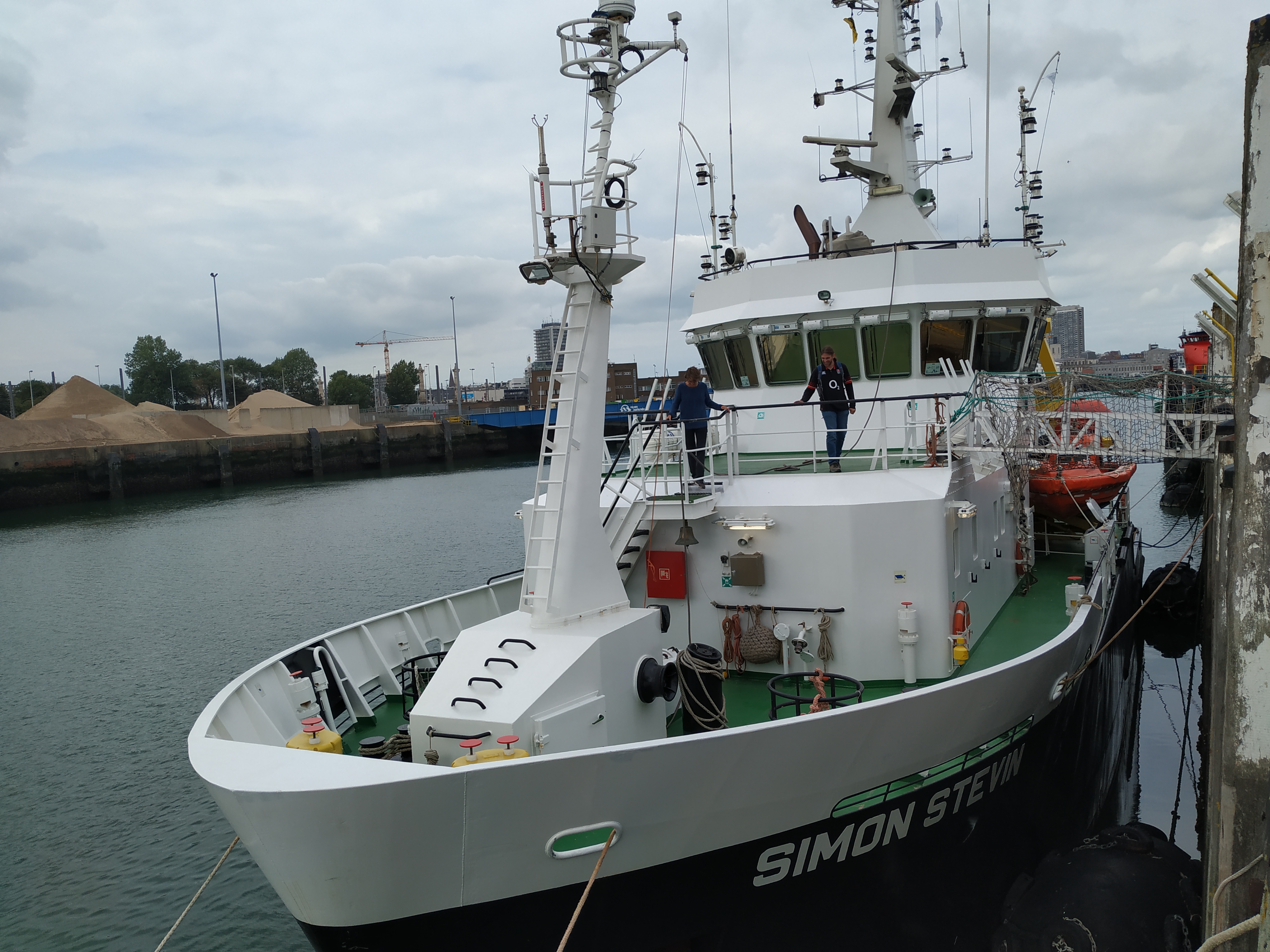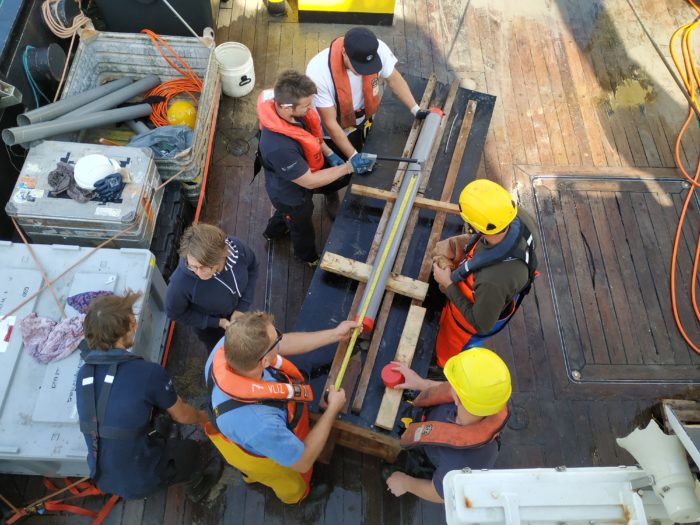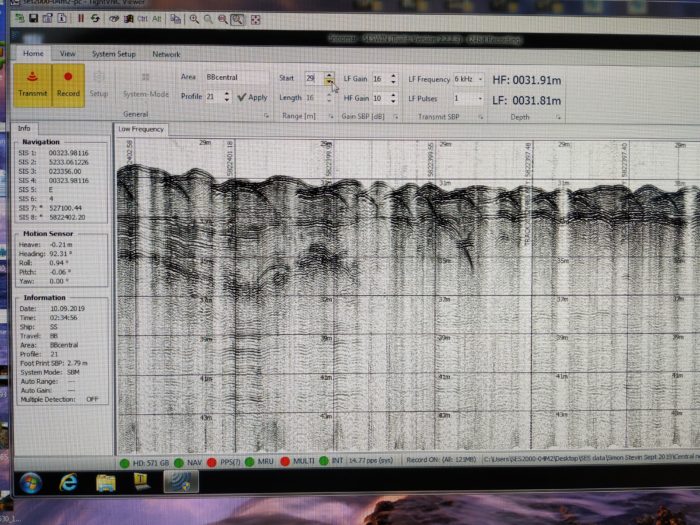RISeR onboard the Simon Stevin

The first week of September, Víctor had the opportunity to join an international group of researchers in a survey in the southern North Sea. The survey was on board the RV Simon Stevin, led by Tine Missiaen from VLIZ (Flanders Marine Institute, Belgium) as part of the North Sea consortium. The initial plan was to investigate the stratigraphy, sedimentology and archaeology of the Brown Bank area for 8 days (5th to 12th of September), collecting a wealth of new data: dredges, vibrocores and seismic profiles. However, the survey reminded us an old lesson, when working offshore, weather rules, and the ship was stuck on the port for three days due to bad weather conditions. Waves up to 3 m were sweeping the North Sea, making any kind of offshore operation dangerous. In addition, such conditions would have greatly lowered the quality of the findings.
 Logging and archiving cores on deck
Logging and archiving cores on deck
The ship finally sailed on Sunday, heading to the study area. One day was spent dredging the seafloor, looking for any evidence of human occupation in the past, and another day was used to vibrocore the seabed, collecting invaluable records. The nights were the best moment for geophysical exploration which is the element Victor was involved in, mainly using a parametric echosounder to get high-resolution profiles. Unfortunately, sea conditions were bad enough to impede the deployment of the sparker which means we were unable to collected limited data on the Last Interglacial sediments. The survey ended one day before planned, as a new storm approached the study area forcing a bumpy return to the port. In spite of that, plenty of data was collected and we hope to get fascinating results, in particular on the landscape of the North Sea following the retreat of the last ice sheet.
 Example of the seismic data Victor was involved in collecting
Example of the seismic data Victor was involved in collecting
